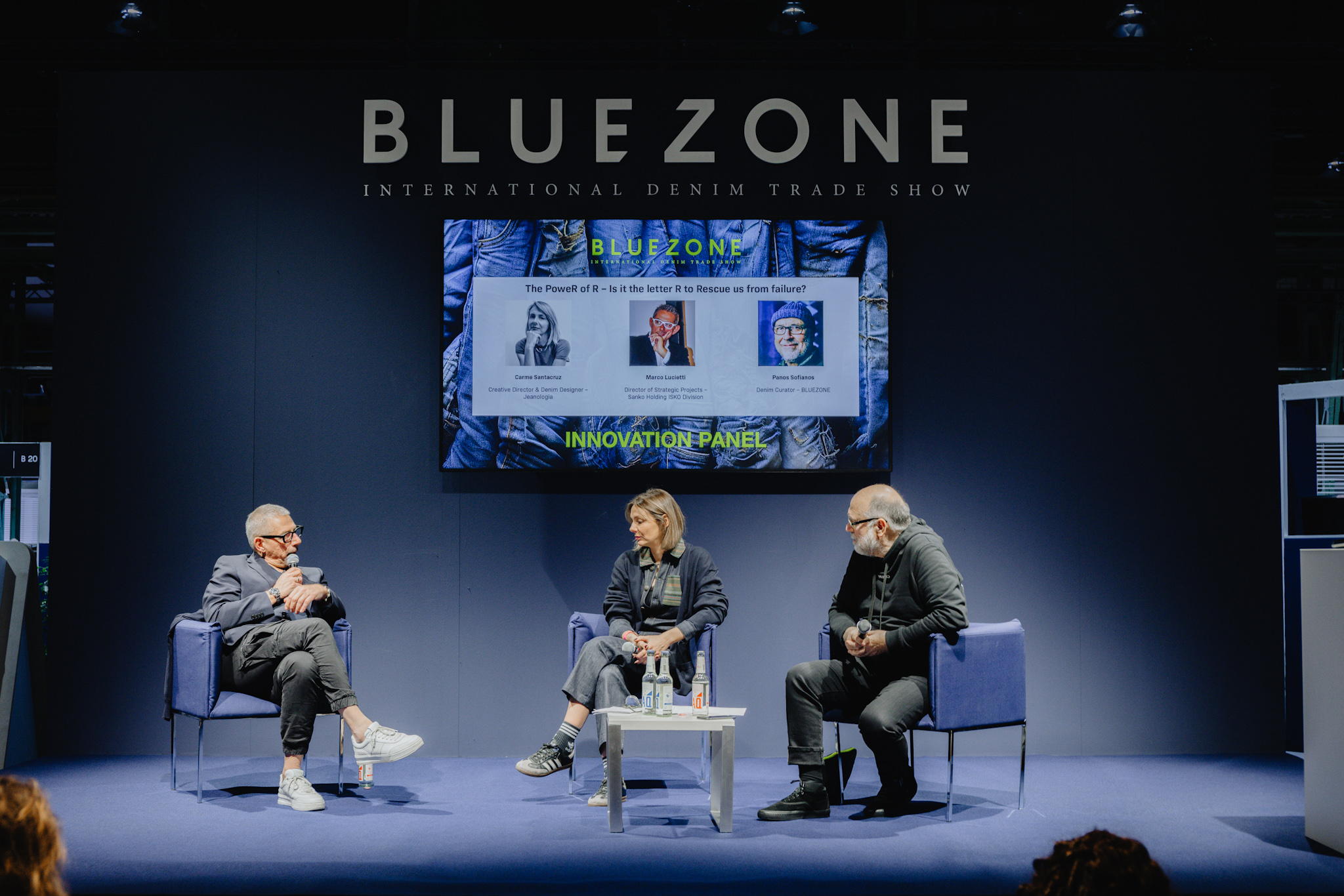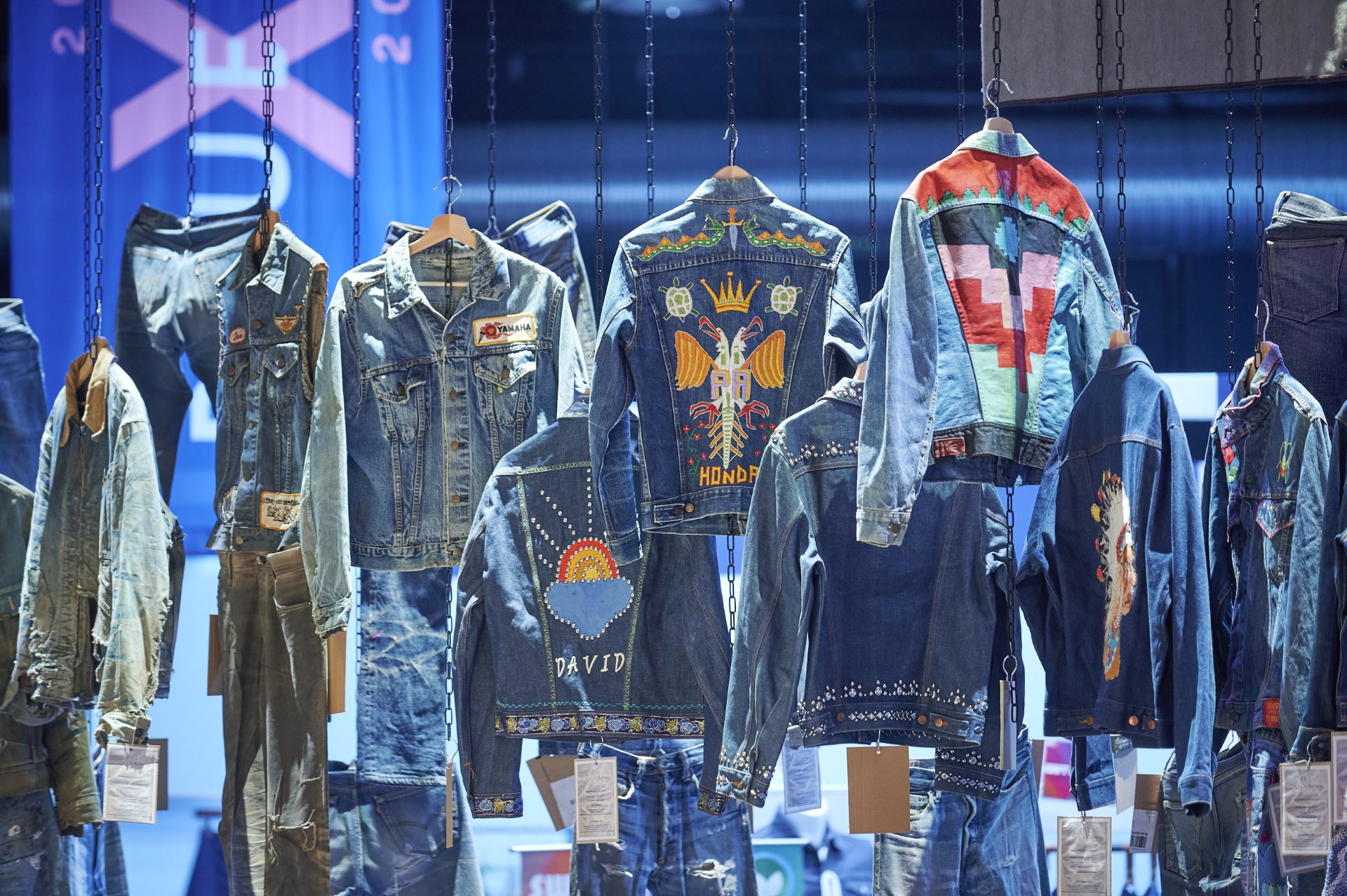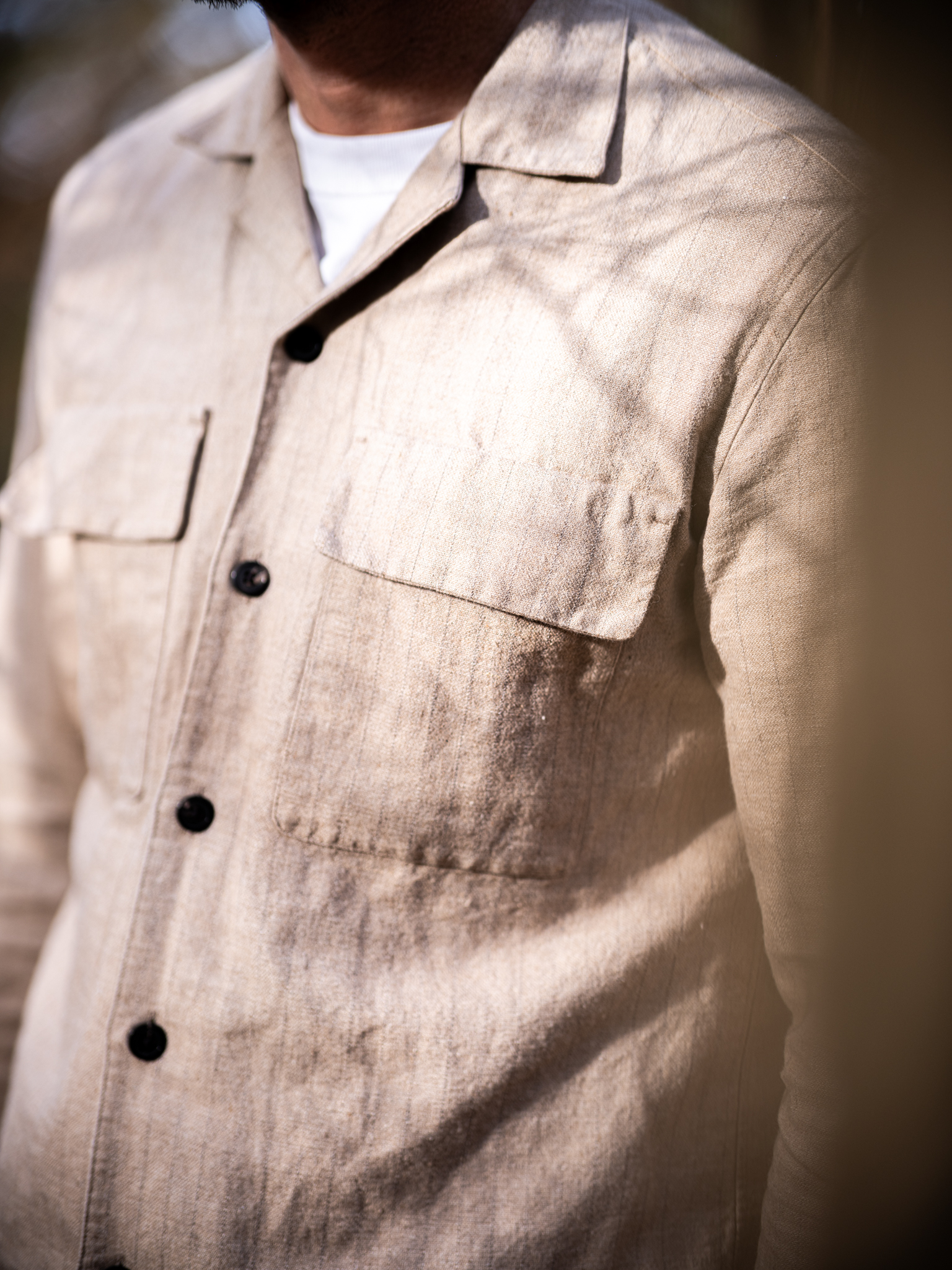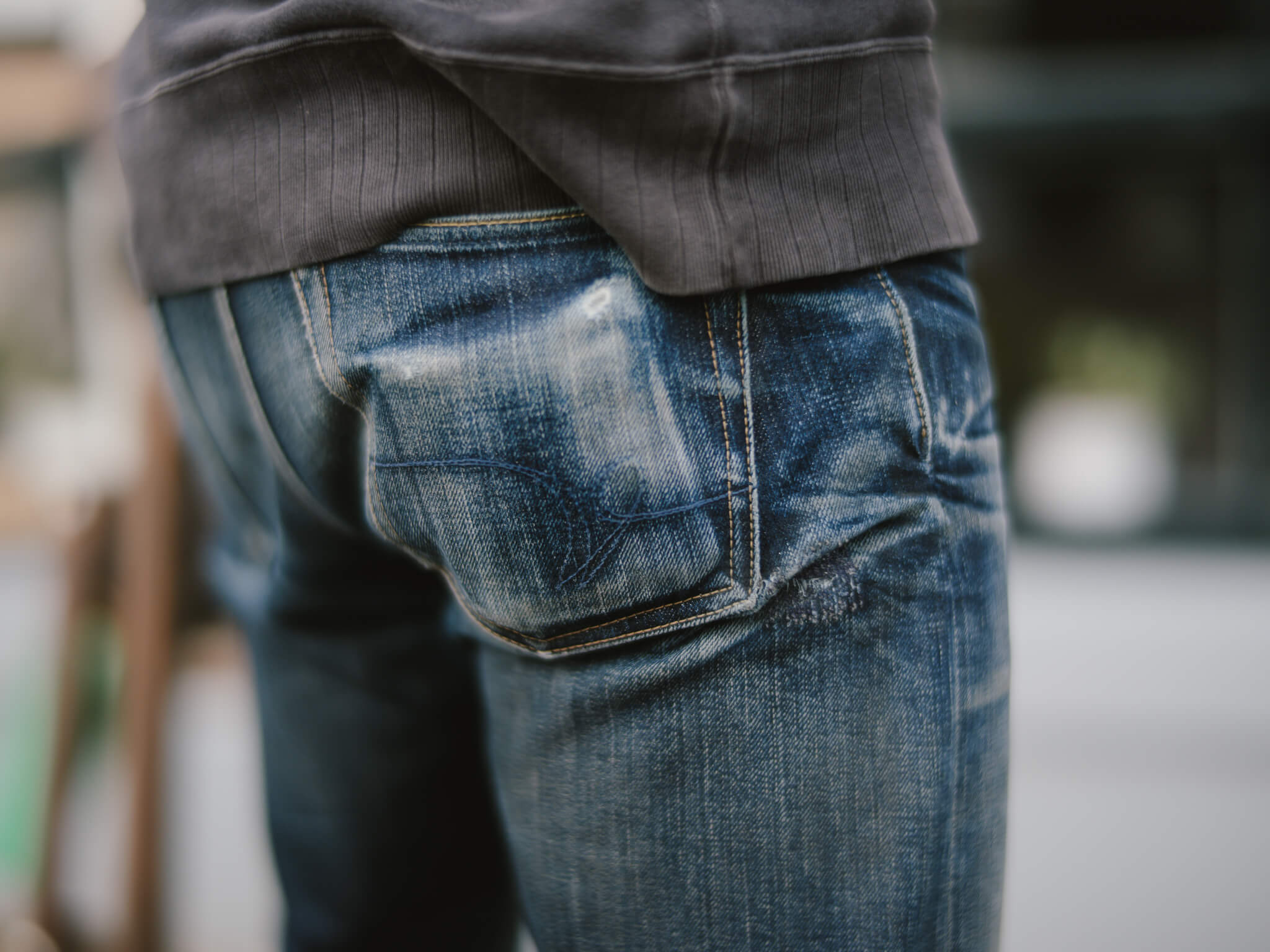Indigo People Fall ’17 collection
Indigo People recently released their Fall ’17 collection, which is, as suspected, full of indigo, heritage and authenticity. Built with complicated traditional techniques and natural indigo, Indigo People succeeded again to deliver an interesting collection.
Indigo people is born out of the love for authentic craftsmanship and the beauty of natural indigo. Together with traditional weaver communities in Asian countries, they bundle their strengths to create handcrafted garments by following long traditions.
For their fall 17 collection, Indigo People mainly focused on two of the most authentic manual techniques that are used by their artisans, namely; Ikat weaving and mud resist printing. These production methods result in small imperfections that give each product a unique appearance. Below, Kiat and Johan, founders of Indigo People will explain both techniques.
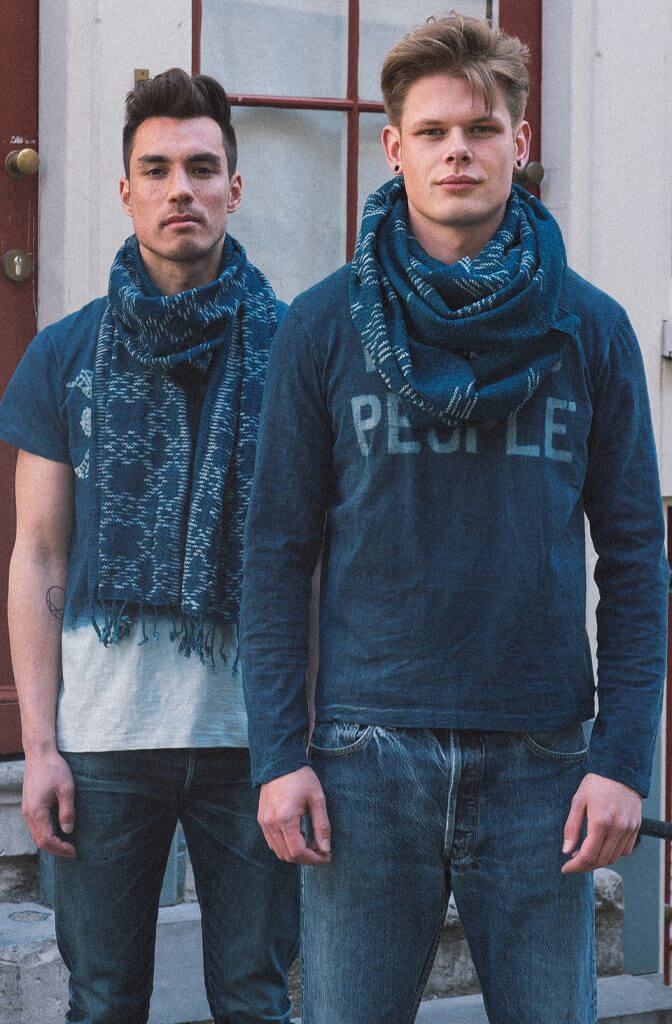
Ikat
The Ikat weaving technique is a resist dyeing process applied on the yarns prior to dyeing and weaving the fabric. It starts by binding the designed pattern on the weaving yarns with tight wrapping. After repeatedly dipped the bound yarns in natural indigo to reach the dark blue color, the bindings are then removed to create the pattern directly on the handloom. The Ikat program can be split into the sub programs of ‘handspun yarns’ and ‘machine spun yarns’. The raw cotton of the handspun yarns gives the scarves an authentic harsh hand feel. The scarves will gain softness by wearing. The machine spun yarns have a soft touch from the beginning and give more wear comfort to the scarves. The Misho, Kori and Naga scarf are made from a blend of cotton and rayon yarns. The rayon yarns give a silky softness to the scarves.
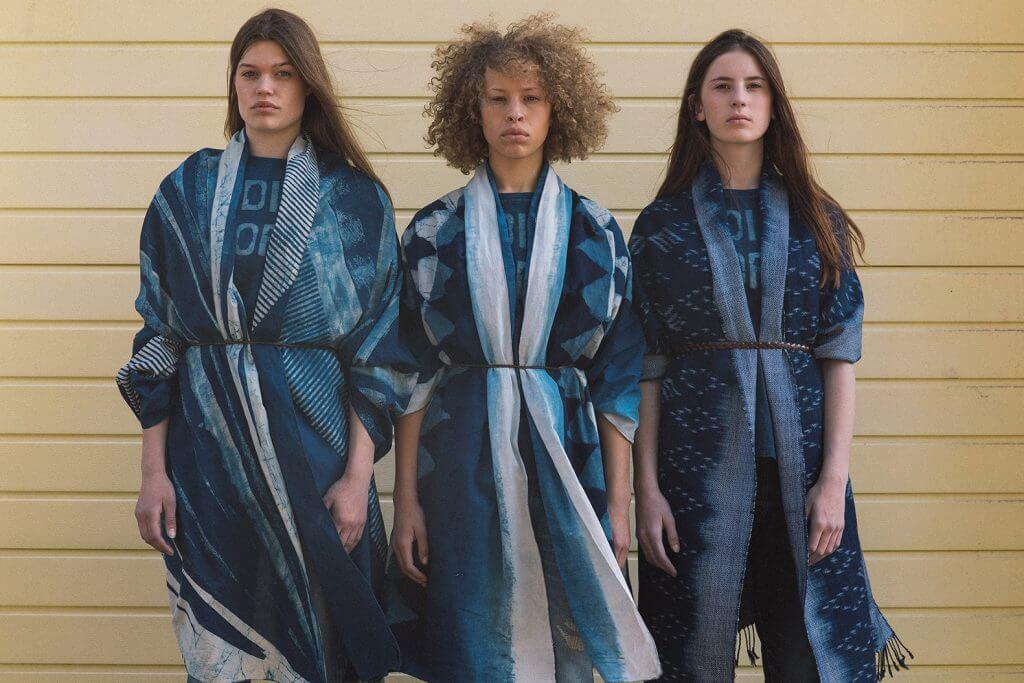
Mud Resist Printing
The mud resist printing technique is a very old and authentic printing method from India. Mud printing is a resist dyeing process applied to the finished textile, using the block print or screen print method. A mixture of mud and tree gum is printed on the fabric using a handmade wooden block or a silk screen. The mud resists dye during the indigo dipping. Once the mud is removed after the dyeing, the printed area remains its original base color.
Head over to Indigo People’s web store to see their Fall’17 collection for yourself.

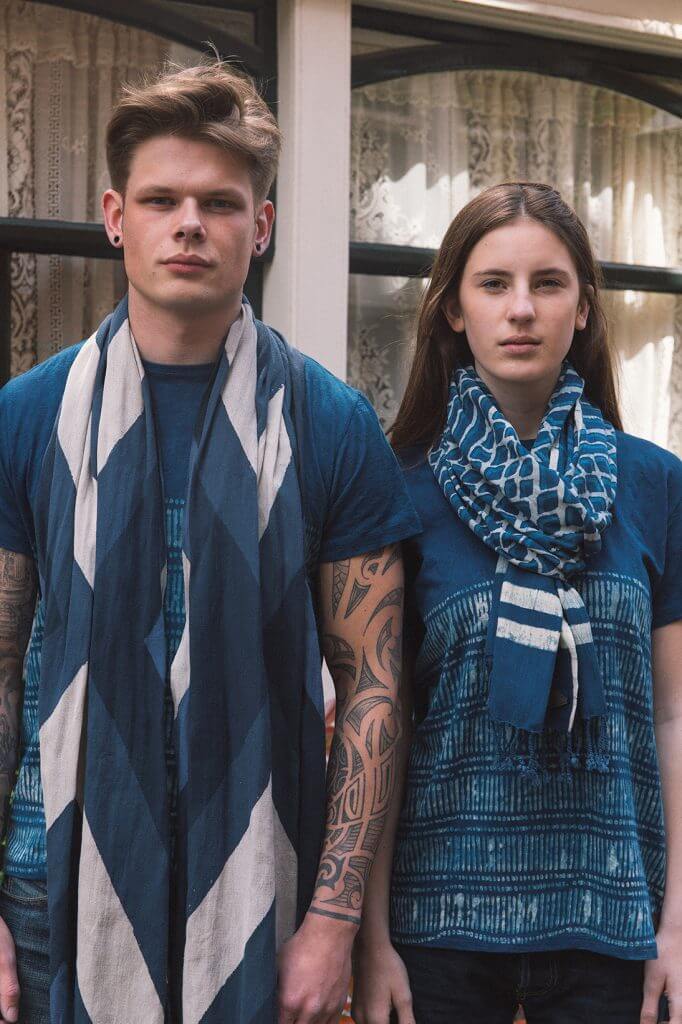
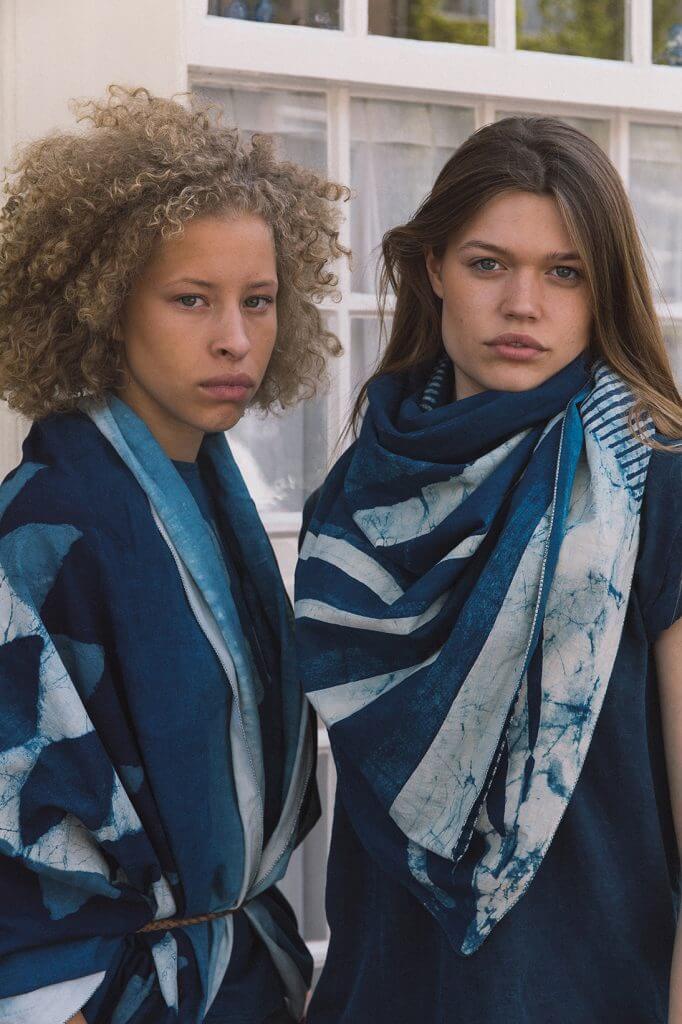
 Share
Share
 Tweet
Tweet
